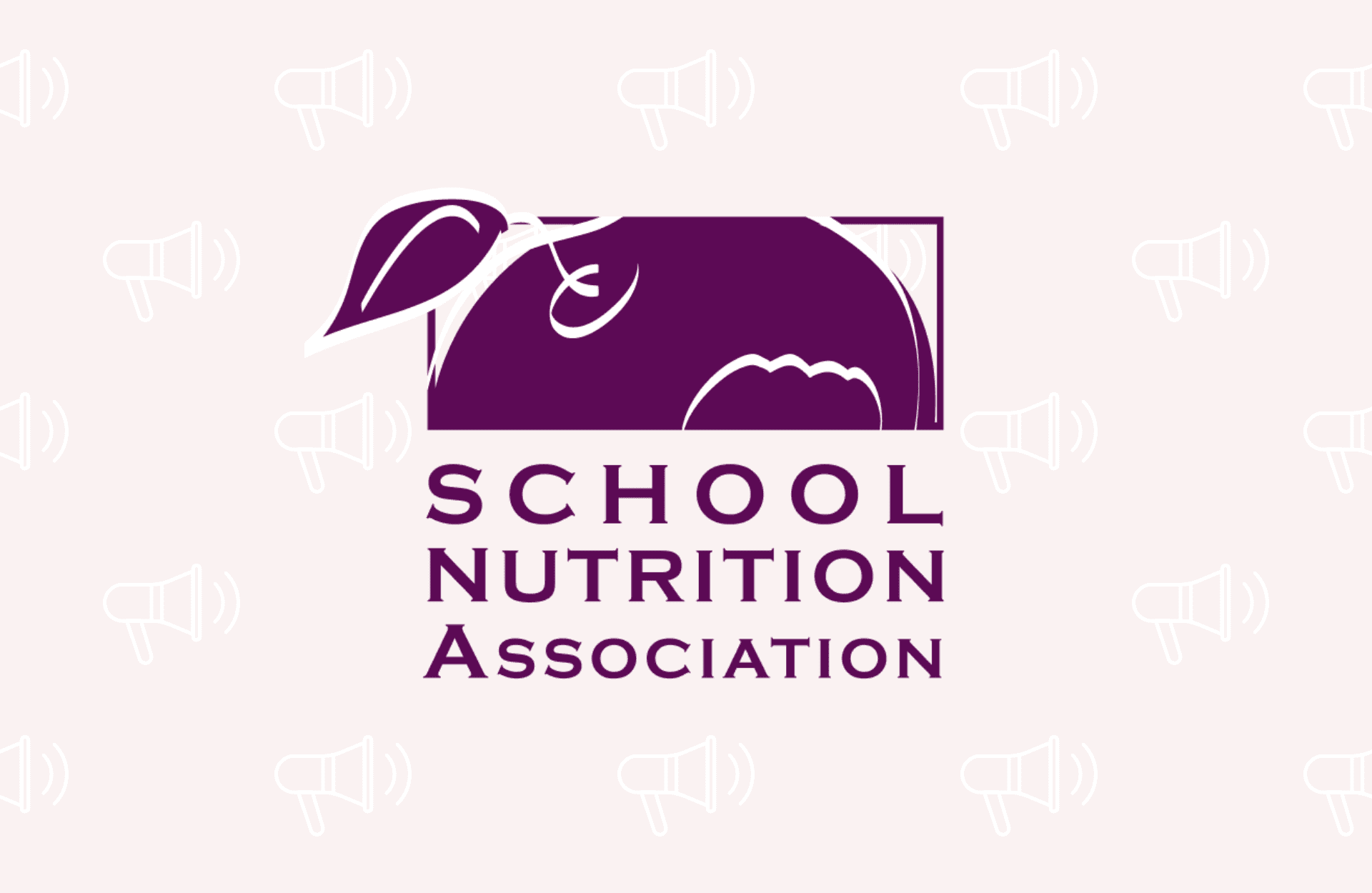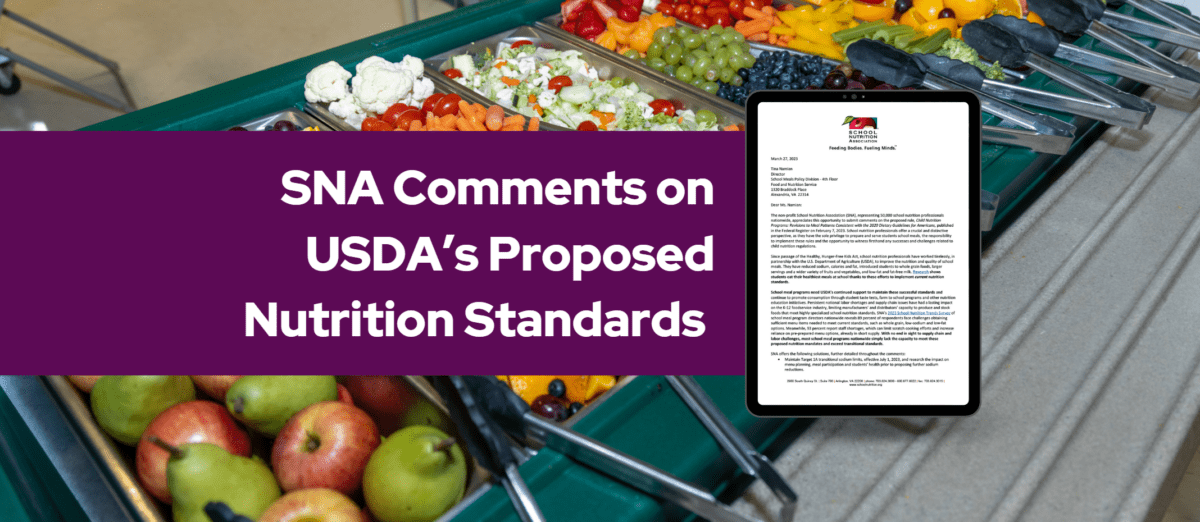Contact: Diane Pratt-Heavner, 703-576-7526, media@schoolnutrition.org
ARLINGTON, VA – Citing research showing students already eat their healthiest meals at school, the non-profit School Nutrition Association (SNA) has urged the U.S. Department of Agriculture (USDA) to maintain current school nutrition standards and focus on expanding access to and promoting consumption of school meals. SNA’s comments, submitted in response to USDA’s proposed rule on long-term standards, also offer alternative solutions to advance the goals of the Dietary Guidelines for Americans.
SNA’s recent survey data show 89 percent of responding school meal programs face challenges obtaining sufficient menu items needed to meet current standards, such as whole grain, low-sodium and low-fat options. Additionally, 93 percent report staff shortages, which limit scratch cooking efforts. Comments included:
With no end in sight to supply chain and labor challenges, most school meal programs nationwide simply lack the capacity to meet these proposed nutrition mandates and exceed transitional standards.
SNA also urged USDA to consider the potential negative impact of proposed rules on student meal participation. Comments included:
Students’ tastes will not adjust to meals meeting stricter school nutrition standards when there are no mandatory nutrition standards for the commercial market or other federal nutrition programs… Since schools are the healthiest place Americans eat, a further drop in student meal participation would be contrary to goals of the Dietary Guidelines for Americans.
The Association proposed alternative solutions. Recommendations for USDA included:
- Maintain Target 1A transitional sodium limits, effective July 1, 2023, and research the impact on menu planning, meal participation and students’ health prior to proposing further sodium reductions.
- To reduce sugar, allow meats/meat alternates to be served in place of the entire grain component at breakfast a maximum of three times per week.
- Maintain the current requirement that at least 80 percent of the weekly grains offered are whole grain-rich, while extending a waiver protecting school meal programs from fiscal action if they can document that supply chain disruptions have prevented them from meeting whole grain and Target 1A sodium mandates.
Maintaining current nutrition standards was among key issues highlighted in SNA’s 2023 Position Paper. The Association is also urging Congress to permanently increase federal reimbursement rates and offer free school meals to all students.
About School Nutrition Association:
The School Nutrition Association (SNA) is a national, non-profit professional organization representing 50,000 school nutrition professionals across the country. Founded in 1946, SNA and its members are dedicated to making healthy school meals and nutrition education available to all students. For more information on school meals, visit www.SchoolNutrition.org/SchoolMeals.
Related Articles

ORGANIZATIONS! Urge Congress to reinstate critical funding!
Read More




